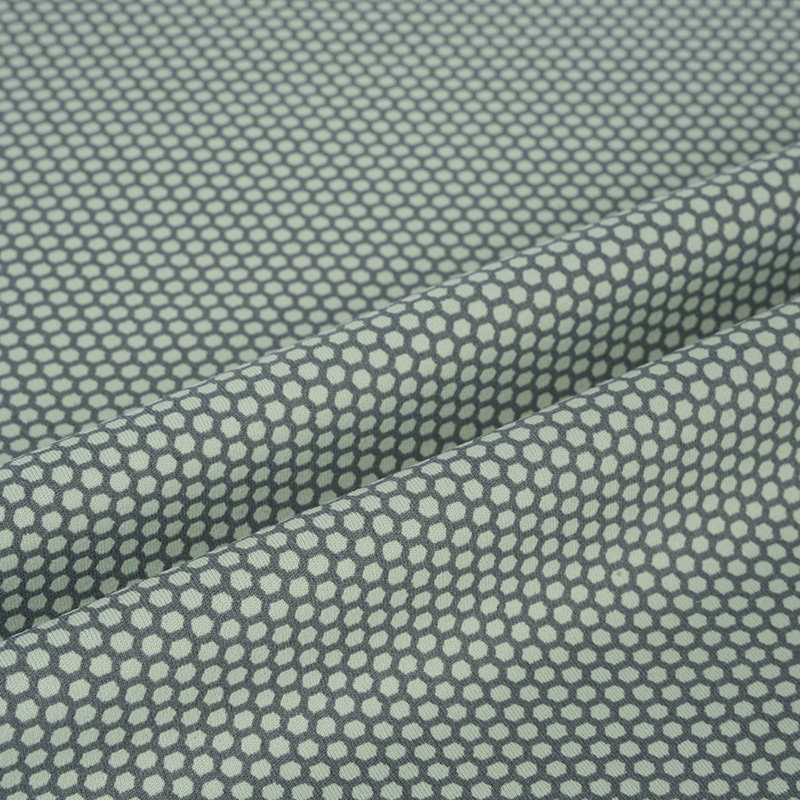We are located in Haining City, Zhejiang Province, one of China's famous knitting industrial Bases.
The Importance of Choosing the Right Yoga Fabric
When it comes to practicing yoga, the right fabric can make a significant difference in comfort, performance, and flexibility. The fabric you wear affects how well you can move through poses, how comfortable you feel during your practice, and how your skin reacts to sweat. Since different yoga poses require different movements and levels of flexibility, selecting the perfect fabric for each type of practice is essential. In this article, we'll guide you through the factors to consider when choosing yoga fabric and how to pick the best material for different yoga poses.
Key Considerations for Selecting Yoga Fabric
When selecting yoga fabric, several factors come into play, including breathability, stretchability, moisture-wicking properties, and comfort. The ideal fabric should allow for free movement, support your practice, and keep you cool and dry throughout. Below are the key characteristics to consider:
- Breathability: Look for fabrics that allow air circulation to keep your body temperature regulated during your practice. Breathable fabrics help prevent overheating and improve comfort during long sessions.
- Stretchability: Fabrics with a good amount of stretch allow for unrestricted movement, particularly in poses that require flexibility. Fabrics such as spandex or elastane provide excellent stretch without losing their shape.
- Moisture-Wicking: Yoga can cause you to sweat, especially in intense practices like hot yoga or vinyasa. Moisture-wicking fabrics draw sweat away from the skin and allow it to evaporate quickly, keeping you dry and comfortable.
- Durability: Choose fabrics that can withstand frequent use and washing without losing their quality. Durable fabrics like polyester and nylon maintain their shape and texture over time.

Yoga Fabric for Flexibility and Comfort in Poses
Yoga poses often involve a combination of stretching, twisting, and holding positions for extended periods. The fabric should support these movements and offer the right amount of comfort. Here's how different fabrics perform for specific types of poses:
For Standing Poses
Standing poses, such as Warrior I, Warrior II, and Tree Pose, require the body to be stable and grounded. The fabric you wear for these poses should offer adequate support and stretch without restricting movement. Fabrics like cotton blends or stretchy polyester are excellent choices as they provide comfort while allowing free movement of the legs, arms, and torso.
For Flexibility Poses
In poses that require deep stretching, such as Forward Fold or Seated Stretch, you'll need a fabric that allows maximum flexibility. Materials like spandex, elastane, and nylon are ideal for these poses because they stretch without losing shape, ensuring you can stretch deeply without feeling restricted.
For Balance Poses
In poses that require balance, such as Tree Pose or Half Moon, the fabric should be supportive yet not too tight, allowing for fluid movement. A fabric with moderate compression, such as a polyamide and spandex blend, can provide stability while ensuring you don’t feel constricted.
For Twisting Poses
Twisting poses, such as Twisted Chair or Revolved Triangle, require a fabric that can move with your body as you rotate and bend. Stretchy materials like cotton-spandex or bamboo fabric are great choices, offering comfort and flexibility to avoid discomfort during the twists.
Yoga Fabric for High-Intensity and Hot Yoga
If you practice high-intensity or hot yoga, such as Bikram or Power Yoga, your body will sweat more due to the heat and vigorous movement. In these practices, moisture-wicking, breathable, and quick-drying fabrics are essential. Here are some recommendations:
- Moisture-Wicking Fabrics: Choose fabrics like polyester, nylon, and moisture-wicking blends that effectively pull sweat away from the skin and dry quickly to prevent chafing and discomfort.
- Breathable Fabrics: Look for fabrics with mesh or ventilation features, which allow sweat to evaporate and air to circulate. Polyester blends with mesh panels are common in high-performance yoga wear.
- Antibacterial Properties: Some yoga fabrics, such as bamboo or specific synthetic fibers, have natural antibacterial properties, which help reduce odor buildup, especially during hot yoga sessions.
Sustainable Yoga Fabrics for an Eco-Friendly Practice
For environmentally conscious yogis, choosing sustainable fabrics is an important consideration. Eco-friendly materials such as organic cotton, hemp, and recycled polyester offer an excellent balance between performance and environmental responsibility. These fabrics are made using less water, energy, and chemicals, making them an ideal choice for those who want to reduce their ecological footprint while maintaining comfort and flexibility during their practice.
Conclusion: Finding the Right Yoga Fabric for You
Choosing the perfect yoga fabric is about finding the right balance between comfort, flexibility, and performance. Consider the type of poses you practice, the intensity of your sessions, and the material properties that best support your body. Whether you prefer soft cotton for gentler practices or stretchy, moisture-wicking fabrics for high-intensity workouts, the right fabric can enhance your yoga experience. By choosing carefully, you can ensure that your clothing supports your movements and helps you perform at your best while keeping you comfortable and confident on the mat.

 English
English  Español
Español  عربى
عربى 













